It is really annoying when you go to the bathroom everyday and find your toilet keep running. Have you ever thought about fixing the problem by yourself? Sometimes fixing a running toilet can be simple and there is no need to call a plumber to solve your problems. This following content offer you the details of how to find the exact causes and give you a quick solution. So, grab your tools and get ready to tackle your running toilet with confidence.
The Agonies of a Never-Ending Running Toilet: Issues that Plague Your Daily Life
Dealing with a toilet that won't stop running can be quite a hassle. It's not just bothersome. It can really disrupt your routine too! The persistent sound of water running can truly grate on your nerves. Moreover a leaking toilet could also lead to a spike, in your water bills.
Annoying Sound
When you hear the sound of water, in your bathroom during the day it's pretty easy to brush it off or overlook it. When night falls it suddenly becomes an issue.This constant noise is usually a hint that there might be an issue with your toilet.It disrupts your sleep and home comfort and indicates a wastage of water. Something that isn't good, for the environment.
High Water Bills
When a toilet keeps running, it's not just bothersome but costly, for your wallet too because it can lead to water bills due, to the excessive wastage of water when the issue is not resolved promptly and properly.It's important to inspect your toilet and address any problems.
It's crucial to view these concerns, as challenges that can disrupt the harmony in your household if left unaddressed. Address them promptly not only for the well being of your home but to contribute positively to the environment. Here is a guide to fix your running toilet.
Common Causes and Solutions for a Running Toilet
Fill valve issues
If your toilet tank continues to fill the water and cannot stop, water flows into the ceramic bowl when the water level of the tank exceeds the overflow outlet of the flush valve.

Solutions
- Close the water valve and open the tank cover.
- Check the float of the fill valve.
- If it is difficult to move up and down, you need to clean the float to ensure that it can easily move up and down.
- If your float is a concealed one or you can’t solve the problem after cleaning, you need to replace your fill valve.
Flush valve issues
If the ceramic bowl has continuous fine water flowing, and the tank refills water at regular intervals, you need to be aware that your toilet flush valve may not be able to remain sealed.
Solutions
1.Close the water valve, and open the tank cover.
2.Check the sealing ring on the valve baffle. If there is scale on the sealing ring, or flush outlet, you need to clean up.
3.If it is a ball flush valve, check the flatness of sphere surface. If you find any scale on the sphere and flush outlet, you also need to do some cleaning.
4.After the cleaning, open the water valve, and wait for the tank to store water. Test your toilet again. If there is continuous water, in the ceramic bowl, you should replace your flush valve.
Proactively Guarding Against Future Challenges
Making sure your toilet lasts and works well means doing more than fixing what's wrong now. You need to act before problems happen to keep your home's plumbing running right. Here, we'll share easy steps to avoid toilet headaches later and make repairs simpler.
Periodically Inspect the Toilet Tank Components
It's important to inspect the components of your toilet tank on a basis to maintain its condition properly.Its recommended to check the filler valve and flapper, alongside parts every six months.This routine helps detect problems, on and prevents unexpected repairs while also conserves water by replacing worn out parts promptly.
Avoid Excessive Use of Harsh Chemical Cleaners
Don't overlook the importance of keeping your toilet clean and pay attention to the cleaning products you choose to use as chemicals might give it a clean appearance initially but could cause damage, to its parts over time due to regular use and friction on surfaces inside the toilet bowl and tank area in the long term Opt, for more natural eco-friendly cleaners as a safer option to preserve the hygiene of your toilet without jeopardizing its longevity.
When you choose to clean a toilet it's best to steer of chemical cleaners that can cause damage because of their corrosive or abrasive properties.Stop using chemicals and cleaners that could be harmful, for your toilets well being. The following table will show you the details.
|
Harsh Chemical cleaners |
Reasons |
|
Hydrochloric Acid |
This powerful acid is often present, in toilet cleaning products and works well in getting rid of limescale and stains; however it may cause damage to the toilets porcelain surface, seals and metal components over time resulting in leaks and changes, in coloration. |
|
Chlorine Bleach |
Mixing bleach, with cleaning products can be harmful as it may produce chlorine gas and cause damage to the toilets finish and rubber parts like flappers and seals despite its effectiveness, in disinfection and whitening purposes. |
|
Sodium Hydroxide (Lye) |
It is commonly found in drain cleaners. It can lead to harm, to both the toilet bowls surface,and plumbing if not handled, with great caution. |
|
Abrasive Cleaners |
When you use abrasives like cleaners or steel wool, on a toilet bowls surface it can create scratches in the glaze over time. These scratches can form grooves that trap dirt and bacteria making it harder to clean the toilet, in the future. |
|
Strong Solvents |
Some chemicals such, as paint remover or specific degreasers can remove the coating on a toilet. Harm the wax seal beneath it causing leaks. |
|
Muriatic Acid |
While it can remove stains and mineral deposits effectively its high acidity may quickly erode the toilet bowl and pipes leading to structural harm. |
|
Enzyme-Based Cleaners with Harsh Additives |
While enzyme cleaners are generally safer, some commercial versions, may contain additional harsh chemicals, that can harm the toilet's surface. |
It's crucial to read labels, and use these cleaners, according to instructions, or opt for gentler, eco-friendly alternatives like vinegar,and baking soda for routine cleaning.Remember, excessive use or misuse of harsh chemicals, can shorten the lifespan, of your toilet, and pose health risks, due to fumes and residue.
Check Household Water Pressure
High water pressure might not seem like a big deal, but it is for your toilet. Too much pressure wears out the toilet's parts, causing leaks and problems. Use a water pressure gauge to check, staying in the safe range. If pressure's too high, a pressure regulator can help. Professionals can install it if you're not up for a DIY task.
In addition, you need to know that the household water pressure should be regulate according to the toilet type you choose.
Traditional toilets, with tanks need water pressure as they use the water in the tank for flushing purposes.However sophisticated tankless toilets have higher water pressure needs as they draw water directly from the supply system for instant flushing.These toilets usually need a water pressure of 0.14 MPa. It should not go beyond 0.75MPa to prevent any water hammer effect and damage, to the equipment.
Water hammer effect
The water hammer effect, in toilets occurs when there is a pressure wave due to a change in water flow within the pipe system caused by the flushing mechanism and closure of the valve, in smart toilets. The impact moves through the pipe at the speed of sound. Can lead to pipe vibrations and noise or even harm to the pipes structure or related components.
|
Water hammer effect of the toilet |
||
|
Characteristics and Influence
|
Instant pressure increase |
The sudden surge, in pressure within the pipeline due to the water hammer effect can exceed the operating pressure levels. Potentially lead to damage, in the pipeline infrastructure. |
|
Noise |
The individual might notice a buzzing sound emanating, from the pipes indicating a water hammer phenomenon taking place. |
|
|
Potential damage |
Term or intense water hammer impacts could lead to the loosening of connections, in pipes. Cause damage to equipment, like water filters or heaters. |
|
|
Solution |
Adjust the pressure |
Adjust the water inlet pressure of the toilet to reduce the possibility of a water hammer. Install a special water hammer remover in the pipe system to absorb and buffer the pressure wave through a piston or air chamber in a closed container. |
|
Use a pressure reducing valve |
Make sure to put in a pressure reducing valve, on the water supply pipe connected to the toilet to manage water pressure and minimize the impact of water hammering. |
|
|
Improved design |
For the intelligent toilet, optimize the design of the solenoid valve of its flushing system to make it close more gently and reduce the mutation of water flow. |
|
Following the guidelines mentioned earlier and applying them consistently while utilizing the restroom system in your residence or office can effectively. Lessen the problems caused by water hammer effect all the while safeguarding the integrity of the plumbing system and its associated fixtures and appliances.
Additional Tips and Tricks
After covering basic steps, we offer more advice to keep your toilet working well. Simple yet effective tips can prevent many common problems.
Use Dye to Detect Leaks
For leak detection, a non-toxic dye works wonders. It is a simple and effective
method. The specific steps are as follows:

|
steps |
Process |
|
Prepare dye |
Opt for food coloring or a toilet friendly dye available, at your local supermarket or grocery store ensuring it won't cause any harm to the toilet surface. |
|
Close the water inlet of the toilet tank |
Before starting the test be sure to turn off the water supply valve, on the toilet tank to avoid it refilling while the test is, in progress. |
|
Add dye |
open the lid of the toilet tank and pour the dye directly into the tank. Usually a few drops are enough. The specific amount of dye should be checked according to the product instructions. The purpose is to make the water in the tank completely change color. |
|
Wait for observation |
After blending the dye with water and letting it sit for a minimum of 30 minutes up, to a couple of hours refrain from using the restroom during this period to guarantee the tests precision. |
|
Check the toilet bowl |
Take a look, at the toilet bowl to check for any signs of a leak problem; If there’s dye color inside the bowl when the toilet is not in use it could mean there's a leak either between the tank and the toilet or, within the toilet itself. |
|
Locate the leakage point |
If you notice a leak, in your toilet bowl or tank area that may indicate a problem with the seal ring at the base of the toilet or a component within the water tank like the flushing mechanism valve or pipes inside it potentially causing the leak issue, at hand can be identified using a dye test to pinpoint the area of concern. |
|
Treatment of water leakage |
once the water leakage location is determined, the corresponding maintenance measures can be taken, such as replacing the sealing ring, repairing or replacing the damaged internal parts. If the problem is complex, it is recommended to contact a professional maintenance personnel. Through this simple process, you can effectively diagnose whether the toilet is leaking, and initially judge the source of the leakage, so as to take the appropriate solution. |
Lower Water Levels Slightly for Savings
Adjusting the toilet tank's water level boosts efficiency. It involves changing the float's setting. This part controls the after-flush water level in the tank.
Lower the float to decrease the water level. This saves money without affecting flushing power. It's a simple change that promotes greener plumbing. Aim for the water level to be an inch below the overflow tube.
Refined and Practical HOROW Toilets Tailored for your Preference & Comfort
Having to handle toilet tank problems can be quite annoying and unsettling, within your household environment.HOROW toilets seamlessly combine functionality, with aesthetics to address these issues effectively.They not have an appearance but also perform exceptionally well in ensuring that your bathroom remains a stress free haven.
HOROW T38P Toilet
HOROW T38P toilet is top-notch for flushing. It flushes well every time you press. With its elegance and functionality, the T38P is a standout choice.
HOROW T38P toilet brings together ease and accessibility through its flushing system and adherence, to ADA standards. Making it a perfect choice for any restroom setting. Crafted for a 12 inch, in installation requirement and boasting a design aesthetic; this toilet provides a touchless experience that promotes hygiene by utilizing a sensor driven flushing mechanism.
The ADA compliant layout offers improved convenience and accessibility, for those facing mobility issues.The sleek and compact design effortlessly blends, into any environment while the performing flushing system guarantees efficiency and water conservation.

HOROW T30 Toilet
HOROW T30 shines in small spaces. It proves you don't lose style in tight spots. It fights issues with strong internals, making it reliable and quiet. HOROW T30 has a new pressurized mechanical flushing system.
The non-electric bidet toilet seat and adjustable dual spray heads are suitable for all bathrooms and provide a comfortable cleaning experience.

HOROW T05 Toilet
HOROW T05 is built to last and easy to maintain. It's perfect for no-hassle bathroom setups. Its durable build and simple use solve toilet troubles effectively.
It is a one-piece toilet with bidet functionality. This elongated one-piece smart toilet features an instant heating seat, 4 levels of adjustable drying, and water temperature. In addition, its automatic opening and closing lid and flush function avoid bending down multiple times. It contains convenient 4-way flushing - auto flush, foot touch flush, remote flush, and manual control flush.

Whether you're dealing with a busy home, a constantly running toilet, or just want a nice bathroom, HOROW has you covered. Choosing HOROW means picking a toilet that matches your comfort and style. They bring peace and functionality to your bathroom.
FAQ
1. How can I identify the cause of my running toilet?
Make sure the flapper is sealing properly first, before checking anything else on the toilet tank setup. Next, inspect the toilet chain for any tangles or incorrect length adjustments. It’s also important to ensure that the water level does not exceed the recommended height. Listen closely for any sounds of running water, as they may indicate a leak issue between the tank and bowl.
2. What tools do I need to fix a running toilet myself?
Here's what you'll require for the task, at hand. Grab a wrench, a screwdriver, even some spare parts, like a fresh flapper and keep some towels handy to tidy up any spills that occur along the way.
3. Why does adjusting the toilet chain matter?
If the chain is too lengthy or twisted up in knots it can prevent the flapper from sealing which results in the toilet continuously running water. Ensure that there is a give, in the chain to allow the flapper to close effortlessly.
4. How do I use dye to detect a toilet leak?
Drop a bit of food coloring or a dye tablet, into the tank. Let it sit for 30 minutes without flushing the toilet. If you notice any color in the bowl during this time period it's probable that there's a leak from the tank, to the bowl.
5. What should I do if water keeps running into the toilet bowl?
Check out the flapper mechanism along, with the float and fill valve components; problems related to these parts could result in a water flow issue that needs to be addressed by either making adjustments to the flapper or float or considering a replacement, for the fill valve component.

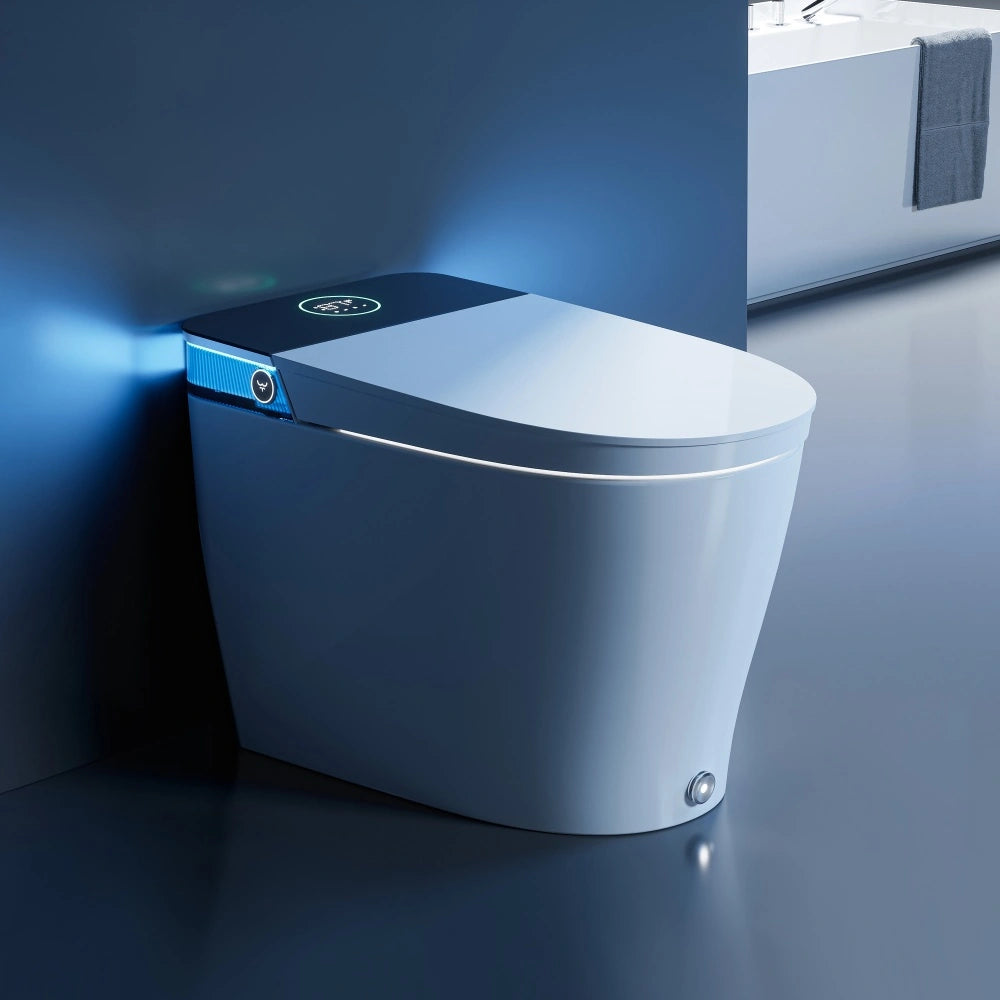
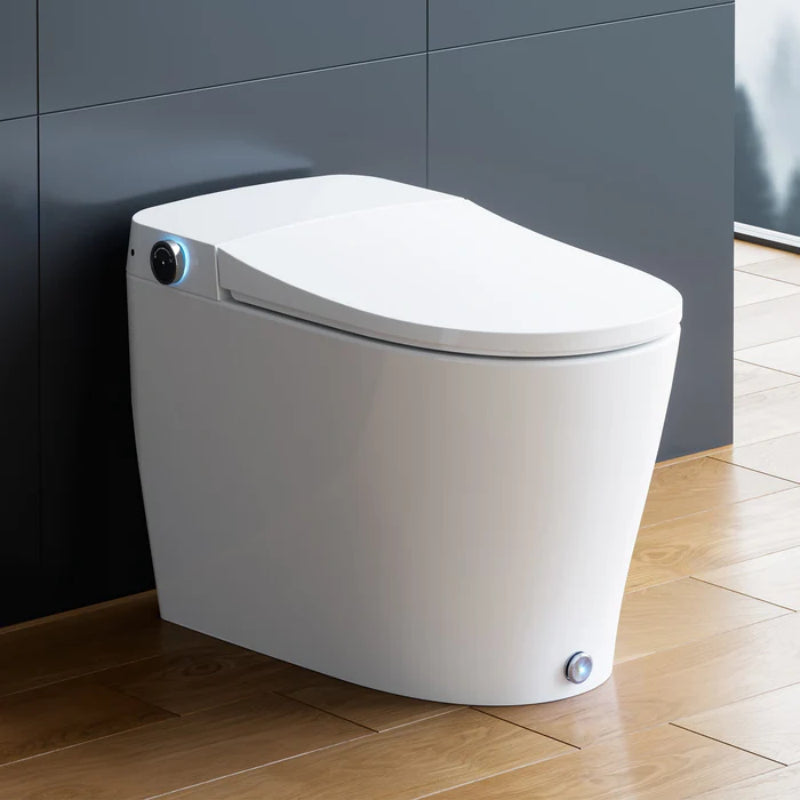
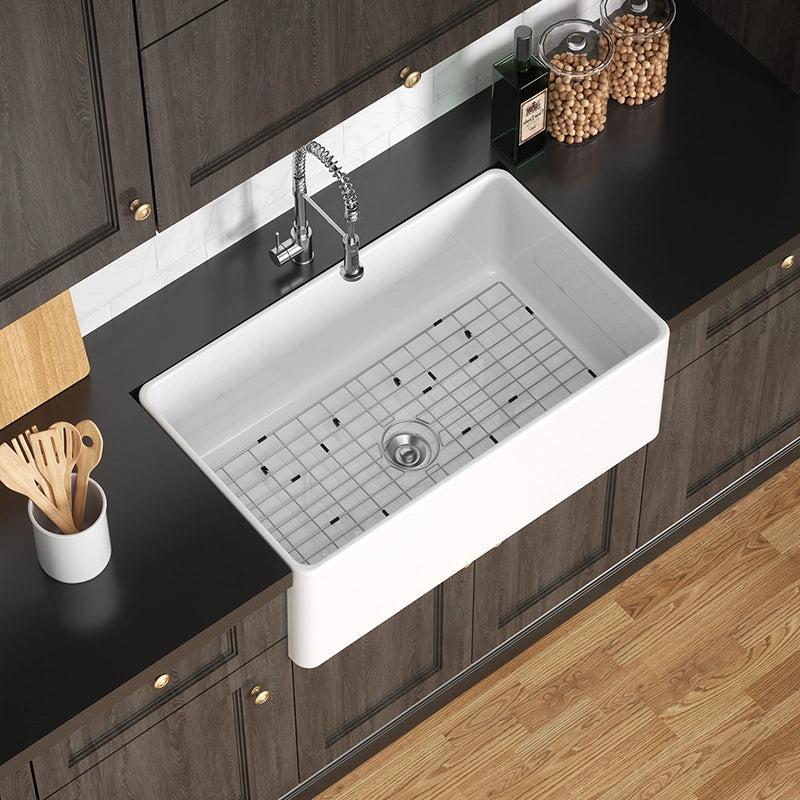
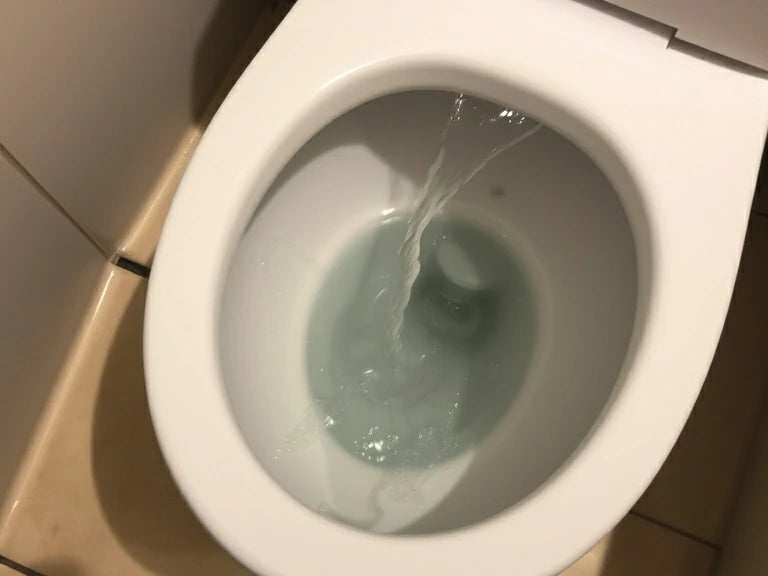
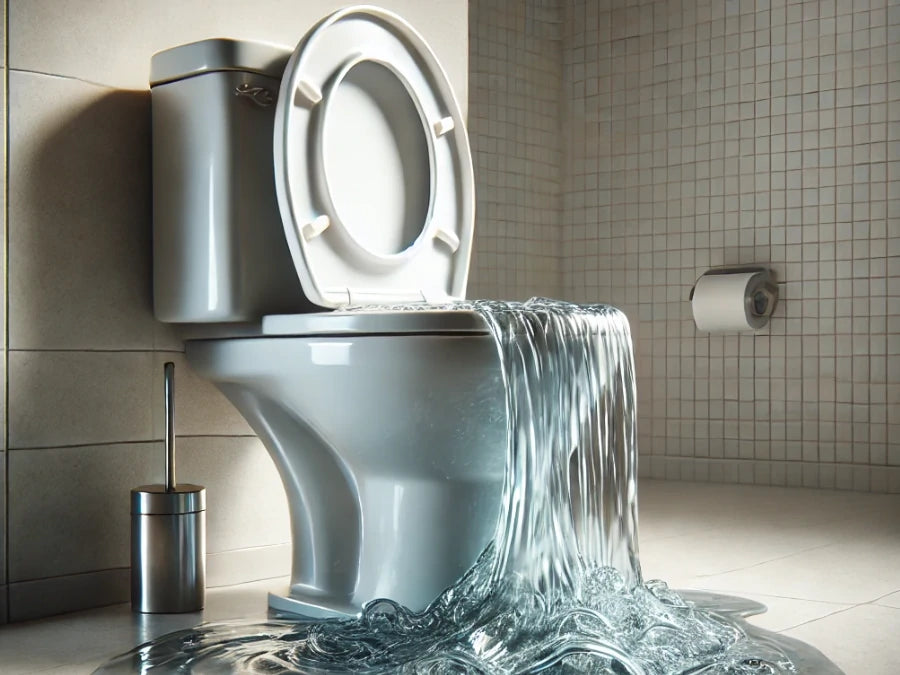


Leave a comment
This site is protected by hCaptcha and the hCaptcha Privacy Policy and Terms of Service apply.